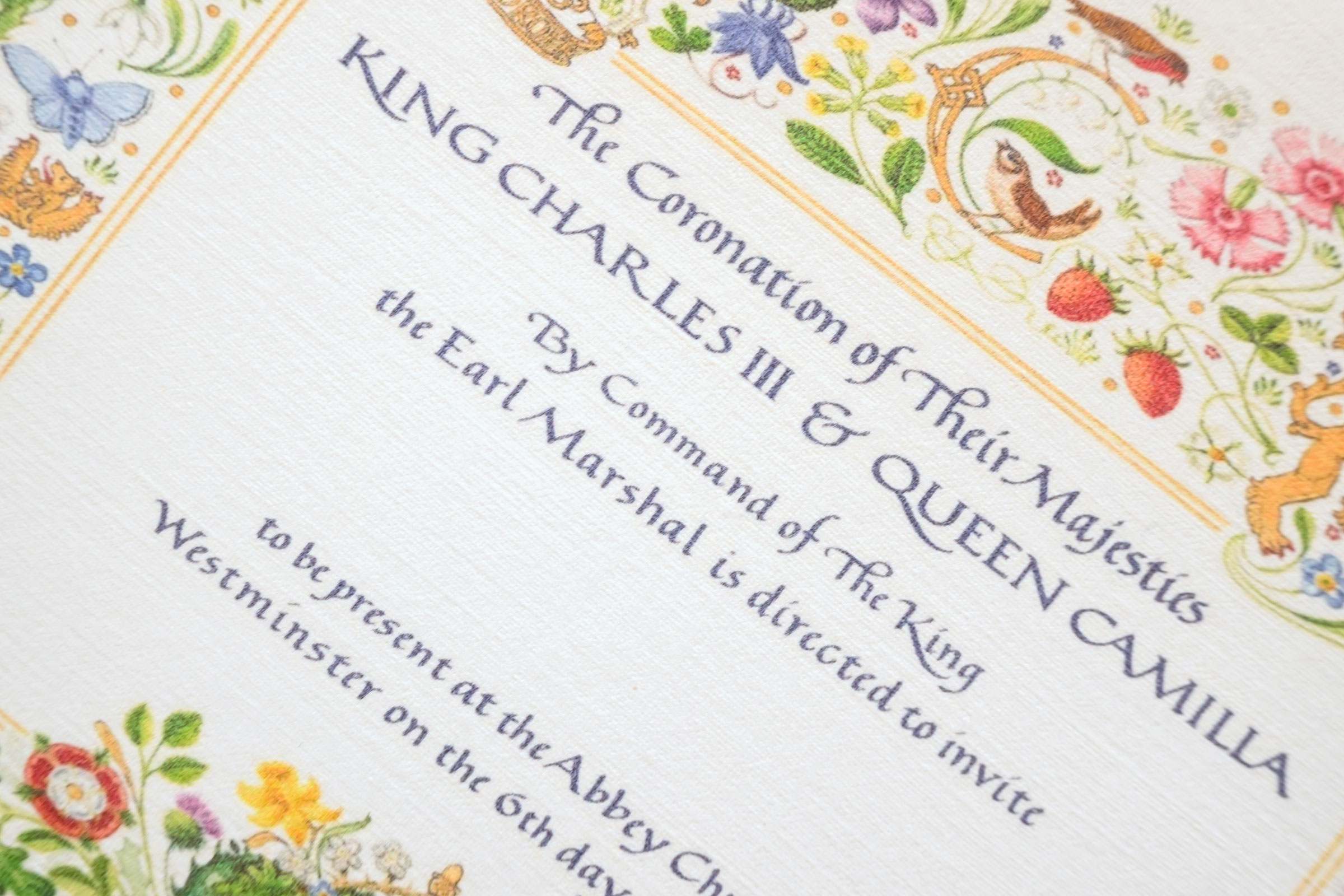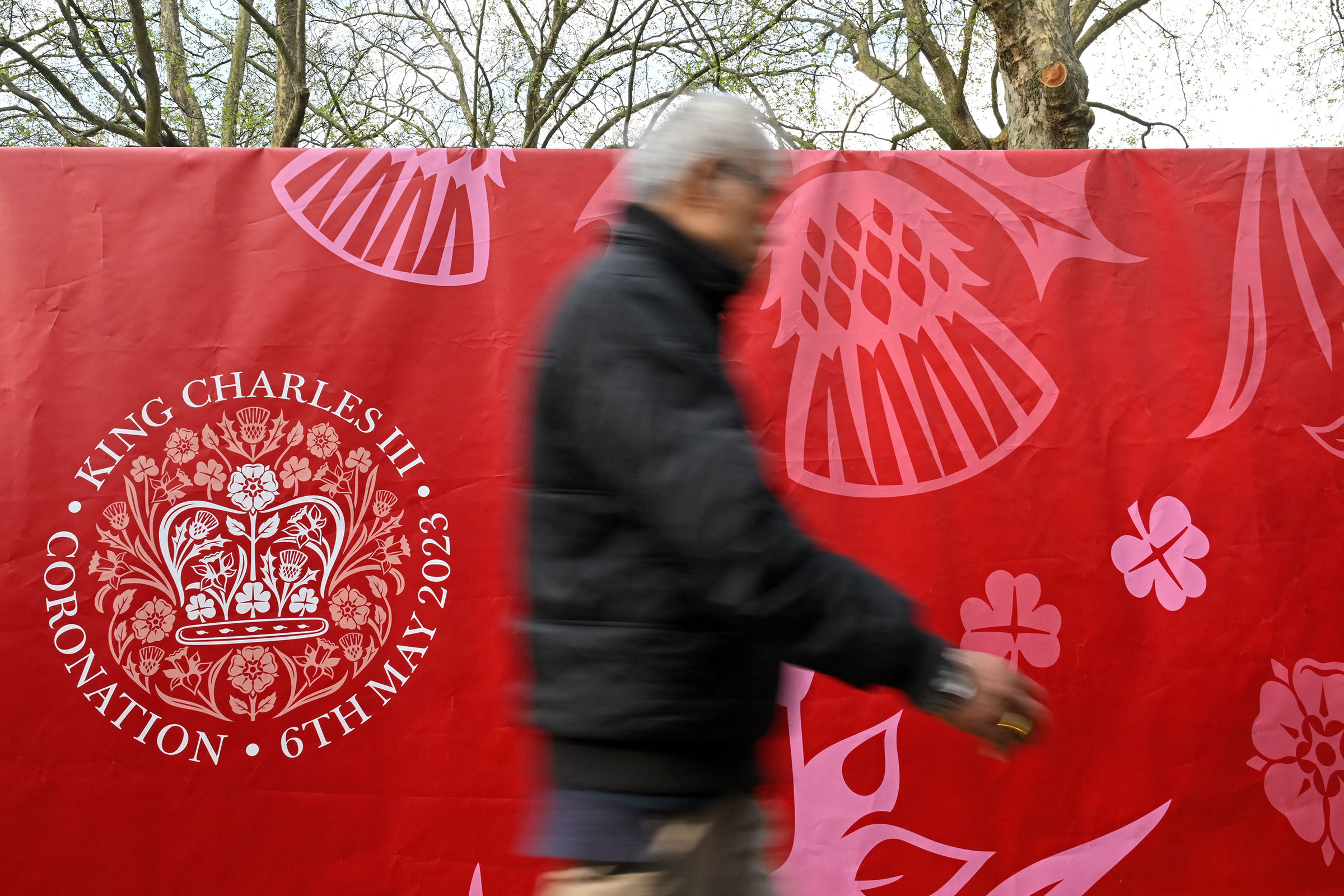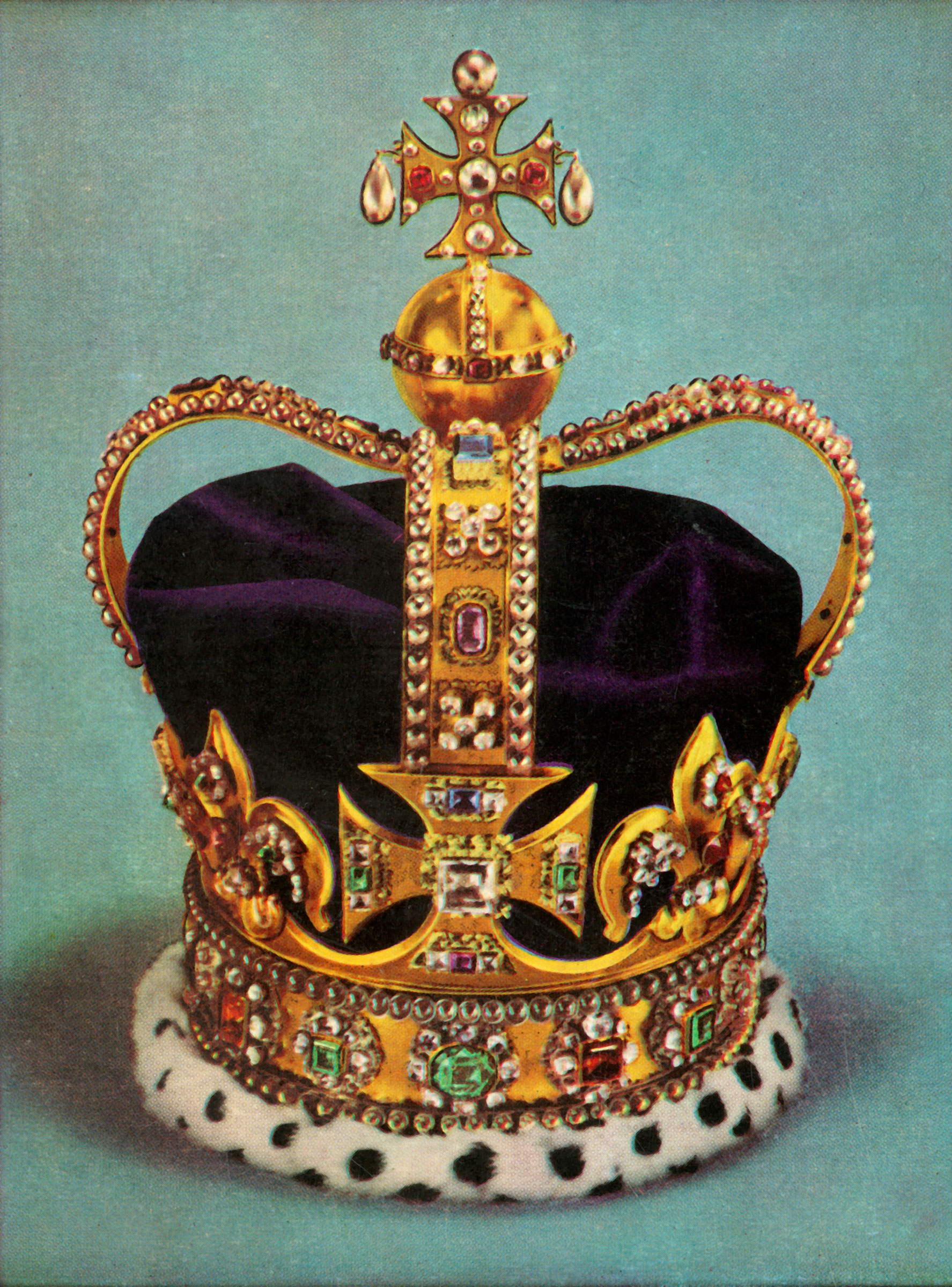King Charles III will be crowned at his coronation at Westminster Abbey today, a ceremony that featured odes to the past and royal legacy, while also looking ahead to his reign through a mixture of bold and subtle symbols.
The royal family, heads of state, and other notable guests are gathering for a coronation that in comparison to Queen Elizabeth’s 70 years ago, will be subdued, but still marked by the traditional regalia and pomp that the royal family has fulfilled for more than 1,000 years.
“This is really about generational legacies, not just about a state occasion but very much about dynastic legacies,” Romita Ray, an art history professor at Syracuse University, tells TIME. “The coronation symbols have these dual meanings for both state, as well as for dynasty.”
The coronation planners were meticulous to plant symbolism in all the artwork leading up to the event.
Here’s what to know.

The invitation
Last month, Buckingham Palace released the invitation that over 2,000 guests were set to receive for the coronation. The invitation’s original artwork was hand-painted in watercolor and gouache, then printed on recycled cards with gold foil detailing added.
The invitation’s border is a sprawling British wildflower meadow featuring symbols, such as rosemary sprigs for remembrance. Flowers appear in groups of three, signifying that the King is the third monarch of his name. The design centers on the “Green Man,” an ancient figure in British folklore who symbolizes spring and rebirth.

The emblem
The coronation was deemed an occasion to craft a new emblem, which the royal family unveiled in February. It will appear at gatherings, events, and on merchandise throughout May. The design features the rose of England, the thistle of Scotland, the daffodil of Wales, and the shamrock of Northern Ireland, “paying tribute to The King’s love of the natural world.”
The flowers form the shape of St. Edward’s Crown, which King Charles will be crowned with at the coronation. The emblem’s designer said it celebrates spring and “the beginning of this new Carolean era for the United Kingdom.” The colors—red, white, and blue—are a clear tribute to the Union Jack.
“I think the coronation is a very powerful occasion to present what the next monarch might be like and this is all about perception; what we’ll think King Charles’s brand looks like going forward,” Ray says. “He’s bringing his idea of what a modern monarchy should look like.”
Regalia
At the coronation, after King Charles is anointed with holy oil, he will be donned with coronation regalia, objects which symbolize the kingship’s chivalry and represent the power and responsibilities of the sovereign.
Part of the regalia, the “Sovereign’s Sceptre with Cross,” comprises a three-foot gold rod, encrusted with gems, topped with a cross, and set with Cullinan I—the largest stone cut from the largest diamond ever discovered, taken to Britain from South Africa in 1907. (South Africans have started a petition demanding the diamond’s return.) The scepter represents the sovereign’s “temporal power” and “good governance,” according to the Royal Collection Trust.
King Charles will wear historic “coronation vestments,” elaborately embroidered clothing that included a jacket, robes, a sword belt and a glove, that monarchs before him wore at their coronations, too. “In the interest of sustainability,” the king and queen will reuse thrones, coronation chairs, and congregation chairs from the royal collection.
Ray describes the importance of wearing regalia that a monarch’s parent and grandparent wore before them. “It’s almost like channeling their heritage, their legacy, their bodies—their regal bodies through your own on a day like this,” she says. “These are not just material accoutrements. They come very loaded with multiple meanings of the past; the historical past, the personal past, the familial past.”
The “Sovereign’s Orb,” also covered in jewels and topped with a cross, is split into three sections to represent the three-known continents in England’s medieval period: Europe, Africa, and Asia. The orb and scepter have been coronation staples since 1661 and have undergone various modifications over the centuries.
“These emblems are not only meant to be carried, but they’re extending the body visually in very powerful ways,” Ray says. “You’re holding the earth, and it’s a Christian; you’re wearing a crown, so it extends your head. You become all powerful, almighty, in a way in which ordinary human beings don’t. And, of course, it’s formalized through ritual.”
The crowns
The focal point of the coronation is when St. Edward’s Crown is placed upon King Charles’s, on the true “moment of coronation.” A solid gold piece adorned with 444 stones, the crown weighs nearly five pounds. “There are many different crowns that British monarchs own, and there’s a special one that’s set aside for the coronation,” Ray says.
Queen Camilla will be crowned with Queen Mary’s 1911 crown, which was retrofitted with jewels from Queen Elizabeth’s personal collection. It’s the first time in recent history that a consort reused an existing crown instead of commissioning a brand new one. The move was “in the interests of sustainability and efficiency,” according to Buckingham palace.
“Each [artifact] has monetary value, and in this case, of course, historic and cultural value,” Ray says. “For them to be reset and shuffled around is really tapping into a long practice within families who are keepers in many ways, custodians of the priceless gem-encrusted items. It’s not just one little diamond, they’re literally encrusted with a tapestry of gems.”

The queen chose to avoid using the controversial Kohinoor diamond, which Queen Elizabeth had used in her crown. The diamond was given to Queen Victoria in 1849 under the Treaty of Lahore, but many Indians have demanded its return, calling it a stolen artifact from Britain’s colonial rule.
More Must-Reads from TIME
- Donald Trump Is TIME's 2024 Person of the Year
- Why We Chose Trump as Person of the Year
- Is Intermittent Fasting Good or Bad for You?
- The 100 Must-Read Books of 2024
- The 20 Best Christmas TV Episodes
- Column: If Optimism Feels Ridiculous Now, Try Hope
- The Future of Climate Action Is Trade Policy
- Merle Bombardieri Is Helping People Make the Baby Decision
Contact us at letters@time.com